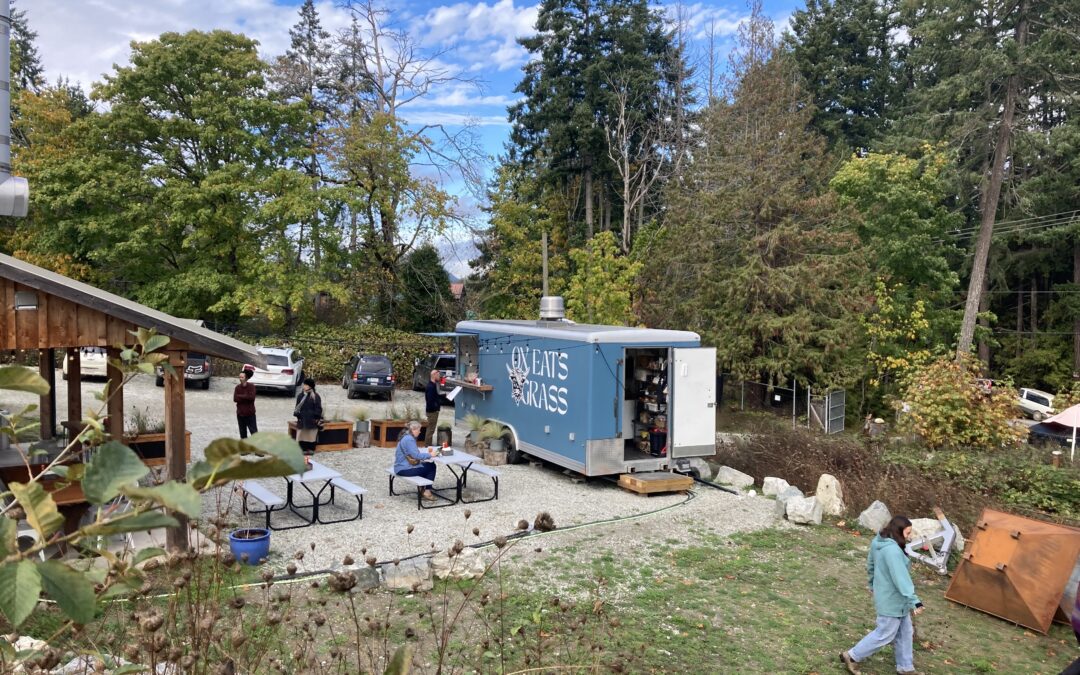The past two weeks have been busy and exciting as we finally enter the design phase! With our partnership with the Salt Spring Island Farmland Trust (SSIFLT) finalized, we have dove head first into the property assessment and initial design for the rainwater harvesting project at The Root. With this shift from client searching and problem exploration to site analysis and design, both Remee and Xavier noticed slight changes in our work days. We spend less time in meetings, and more time conducting research on calculation tools, project planning, and on CAD software.
We had a very exciting visit to The Root last week, which also marked Xavier’s first trip to Salt Spring Island! He enjoyed the rural and rugged beauty of the island, as well as the farming and arts-oriented culture. Sheila, the chair of the SSIFLT board, gave us a tour of the property, including the barn which houses a seed bank. This visit also gave us a chance to analyze the site plans while on the property. Upon advice from one of our mentors, we compared the drawing measurements to our own site measurements. This ended up being very important because we found out that the site plans were not entirely accurate. We were a little nervous upon making this discovery, because we realized we would need to collect accurate site data for our final design.
We also visited the Shawnigan Lake School last week. It was great to finally meet Emma, Marin, Mattias, and Zoe: the four high school students who came up with the rainwater collection idea that became the RainWise project. They gave us a tour of their school, and we got to know more about their daily lives and personal interests. They all seem like wonderful people, and really motivated and engaged students. At the end of our visit, they brought up the fundraiser they are planning. We are very happy that they continue to show dedication to this project despite their busy schedules!
Our industry mentors have been a big help in this early part of the design phase. They are certainly one of the standout features of the Inspire program: a professional and educational network to support you in your project and in your professional development. Their advice and knowledge has helped develop our understanding of water systems as well as guide our research. We also got to have coffee with one of our mentors, who is an environmental engineer. We discussed university and career related topics, and it was great to hear her thoughts and advice as a working engineer. She also told us that working with incomplete and inaccurate plans is surprisingly common in the real world, which made us feel better about our own struggles with inaccurate data.
For the next two weeks, we aim to continue learning about pipe system design as well as gathering more accurate site data. We are also looking forward to the mid-year conference on November 6. It will be a great opportunity to share our work with the university and industry, and a welcome public speaking challenge. We both recognize that there is still a long way to go, but we now have a definite project, a plan for completing it, and resources we can turn to along the way. We are miles from where we started, and our progress so far gives us confidence that we can take on the future, whatever it may bring.

